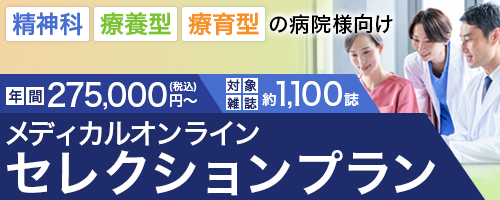アブストラクト
Japanese
| Title | 脳卒中後に生じた自己認識障害に起因した麻痺手の使用行動の低下に対するTransfer packageを用いた実践 - 症例報告 - |
|---|---|
| Subtitle | 実践報告 |
| Authors | 森屋崇史*1, 花田恵介*2, 永谷典子*1, 竹林崇*3 |
| Authors (kana) | |
| Organization | *1医療法人社団六心会恒生病院リハビリテーション課, *2医療法人錦秀会阪和記念病院リハビリテーション部, *3大阪府立大学大学院総合リハビリテーション学研究科 |
| Journal | 作業療法 |
| Volume | 40 |
| Number | 6 |
| Page | 827-834 |
| Year/Month | 2021 / 12 |
| Article | 報告 |
| Publisher | 日本作業療法士協会 |
| Abstract | 要旨:軽度の運動麻痺と感覚障害に加え, 左半側空間無視や麻痺手の使用低下, 自己認識障害を認めた右前頭葉の脳梗塞患者に対し, 上肢機能練習に併せ, CI療法のTransfer packageを実施した. その結果Motor Activity LogのAmount of Use, Quality of Movementともに臨床的に意味のある最小変化量を超える改善が見られた. また, 自己認識障害を評価するAwareness Questionnaireにおいても良好な得点が得られた. 本対象者は, Transfer packageが自己認識機能を促進させ, 実生活における麻痺手の不使用に対する認識を改善した可能性がある. |
| Practice | 医療技術 |
| Keywords | CI療法, 自己認識, 脳卒中, 上肢機能, 高次脳機能, Constraint induced movement therapy, Self awareness, Stroke, Upper extremity, Higher brain function |
English
| Title | Occupational therapy using the transfer package for behavioral disorders of the paralyzed hand caused by self-awareness impairment after stroke : A case study |
|---|---|
| Subtitle | PRACTICAL REPORTS |
| Authors | Takashi Moriya*1, Keisuke Hanada*2, Noriko Nagatani*1, Takashi Takebayashi*3 |
| Authors (kana) | |
| Organization | *1Department of Rehabilitation, Kosei Hospital, Medical Corporation Rokushinkai, *2Department of Rehabilitation, Hanwa Memorial Hospital, Medical Kinshukai, *3Graduate School of Comprehensive Rehabilitation, Osaka Prefecture University |
| Journal | JAPANESE OCCUPATIONAL THERAPY RESEARCH |
| Volume | 40 |
| Number | 6 |
| Page | 827-834 |
| Year/Month | 2021 / 12 |
| Article | Report |
| Publisher | JAPANESE ASSOCIATION OF OCCUPATIONAL THERAPISTS |
| Abstract | A right frontal lobe stroke patient with mild motor and sensory deficits, left hemisphere neglect, decreased use of the affected upper extremity, and self-awareness disorder received constraint-induced movement therapy combined with the transfer package (TP) for the upper extremity. Consequently, the Amount of Use and Quality of Movement Scales in the motor activity log were improved beyond the minimal important difference, and the Awareness Questionnaire, which assesses a client's self-awareness disorder of one's situation, showed improvement as well. The results of this case study indicate that the TP might improve self-awareness functioning and awareness of affected upper extremity use in the real-world. |
| Practice | Medical technology |
| Keywords | Constraint induced movement therapy, Self awareness, Stroke, Upper extremity, Higher brain function |
- 全文ダウンロード: 従量制、基本料金制の方共に770円(税込) です。
参考文献
- 1) Engel L, Chui A, Goverover Y, Dawson DR:Optimis-ing activity and participation outcomes for people with self-awareness impairments related to acquired brain injury:An interventions systematic review. Neuropsychol Rehabil 29(2):163-198,2019.
- 2) Trudel TM, Tryon WW, Purdum CM:Awareness of disability and long-term outcome after traumatic brain injury. Rehabilitation Psychology 43(4):267-281,1998.
- 3) Goverover Y, Johnston MV, Toglia J, Deluca J:Treat-ment to improve self-awareness in persons with acquired brain injury. Brain Inj 21(9):913-923,2007.
- 4) Morris DM, Taub E, Mark VW:Constraint-induced movement therapy:Characterizing the intervention protocol. Eura Medicophys 42(3):257-268,2006.
- 5) Takebayashi T, Amano S, Hanada K, Umeji A, Taka-hashi K, et al:A one-year follow-up after modified constraint-induced movement therapy for chronic stroke patients with paretic arm:A prospective case series study. Top Stroke Rehabil 22(1):18-25,2015.
残りの9件を表示する
- 6) Sherer M, Hart T, Nick TG:Measurement of im-paired self-awareness after traumatic brain injury:A comparison of the patient competency rating scale and the awareness questionnaire. Brain Inj 17(1):25-37,2003.
- 7) Lang CE, Edwards DF, Birkenmeier RL, Dromerick AW:Estimating minimal clinically important differ-ences of upper-extremity measures early after stroke. Arch Phys Med Rehabil 89(9):1693-1700,2008.
- 8) van der Lee JH, Wagenaar RC, Lankhorst GJ, Vo-gelaar TW, Deville WL, et al:Forced use of the upper extremity in chronic stroke patients:Results from a single-blind randomized clinical trial. Stroke 30(11):2369-2375,1999.
- 9) 苧阪直行:意識と前頭葉-ワーキングメモリからのアプローチ-. 心理学研究 77(6):553-566,2007.
- 10) Sohlberg MM, Mateer CA:The assessment and management of unawareness. In Sohlberg MM, Mateer CA, Cognitive rehabilitation:An integrative neuropsychological approach, The Guilford Press, New York, 2001,pp.269-305.
- 11) Toglia J, Kirk U:Understanding awareness deficits following brain injury. NeuroRehabilitation 15(1):57-70,2000.
- 12) Bivona U, Ciurli P, Barba C, Onder G, Azicnuda E, et al:Exclusive function and metacognitive self-awareness after severe traumatic brain injury. J Int Neuropsychol Soc 14(5):862-868,2008.
- 13) Caldwell SB, Wilson FC, McBrinn J, Carton S, et al:Self-awareness following acquired brain inju-ry:Measurement and relationship to executive functioning. Irish J Psychol 35:53-68,2014.
- 14) Taub E, Uswatte G, Mark VW, Morris DM, Barman J, et al:Method for enhancing real-world use of a more affected arm in chronic stroke:Transfer pack-age of constraint-induced movement therapy. Stroke 44(5):1383-1388,2013.



